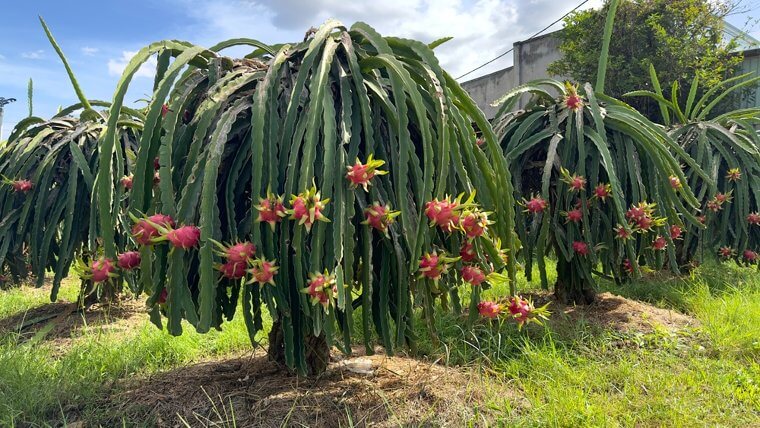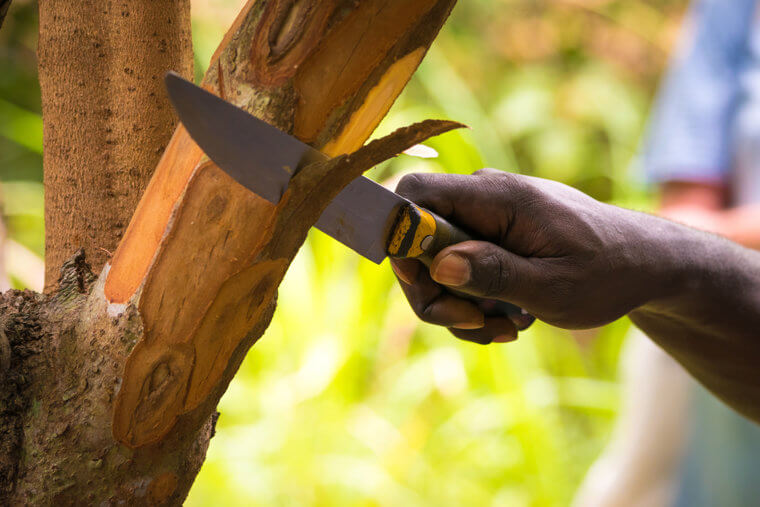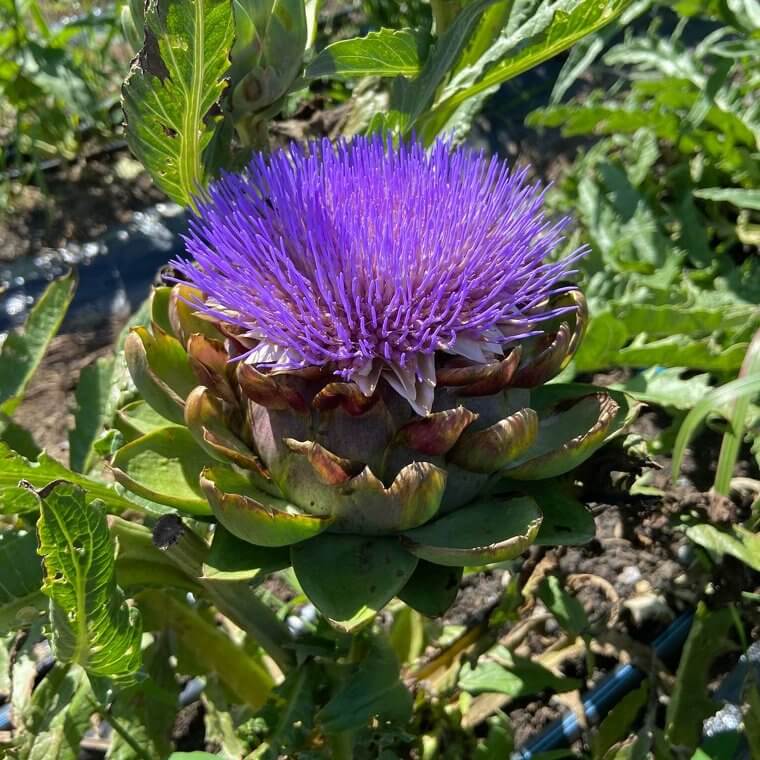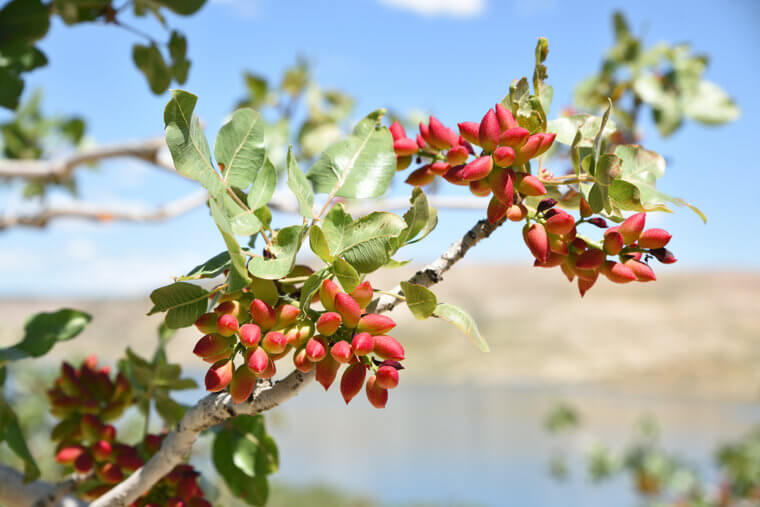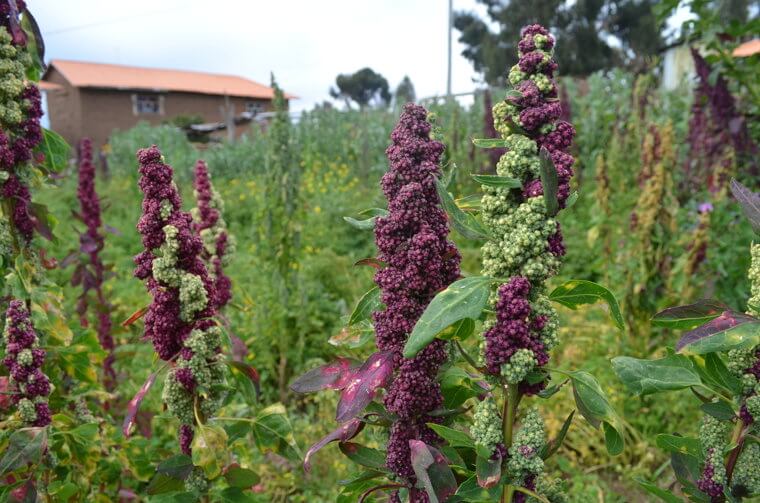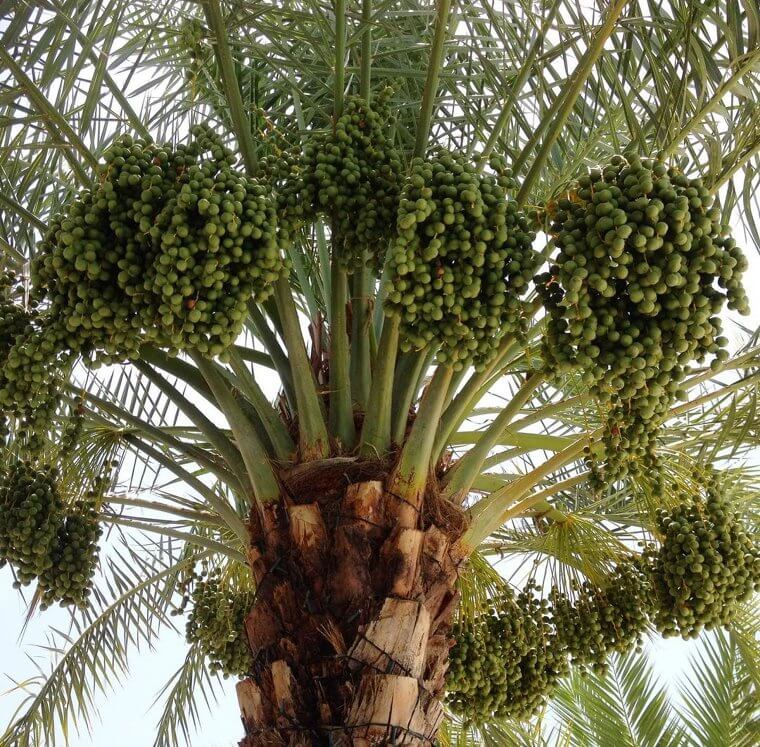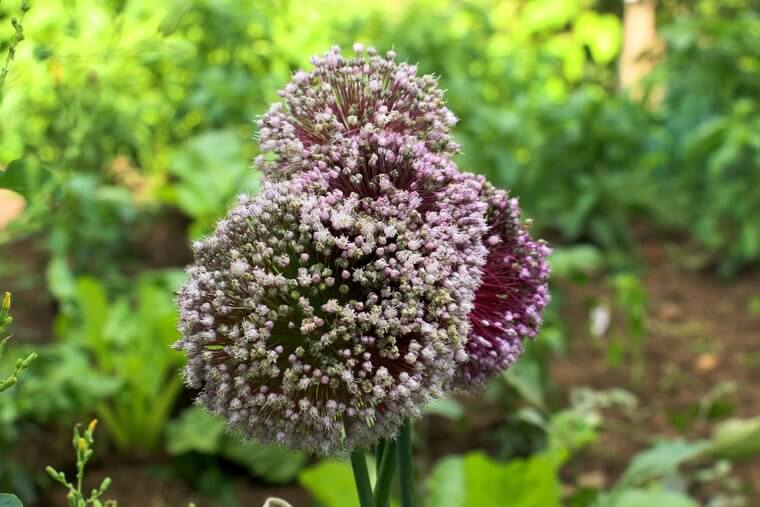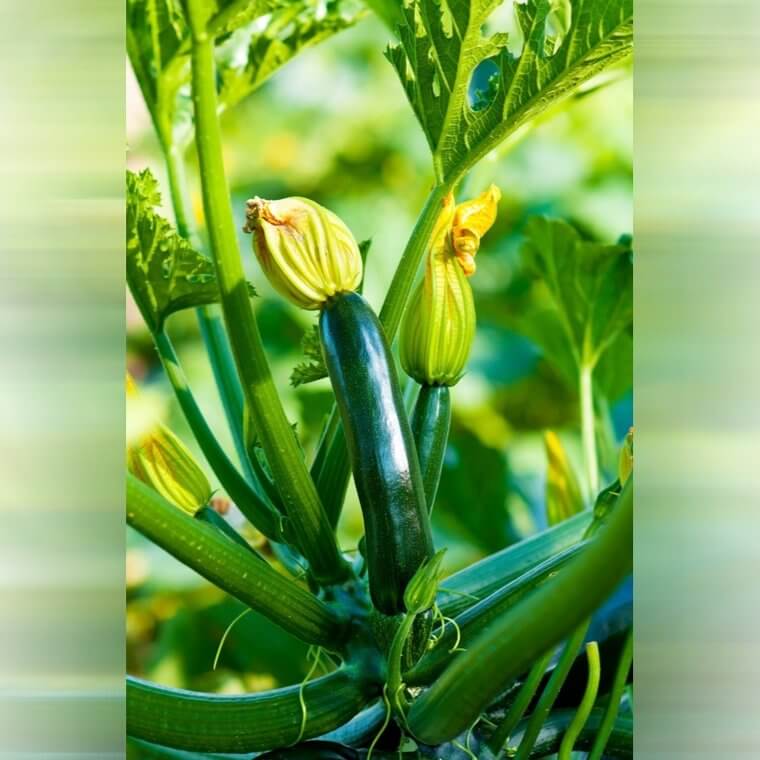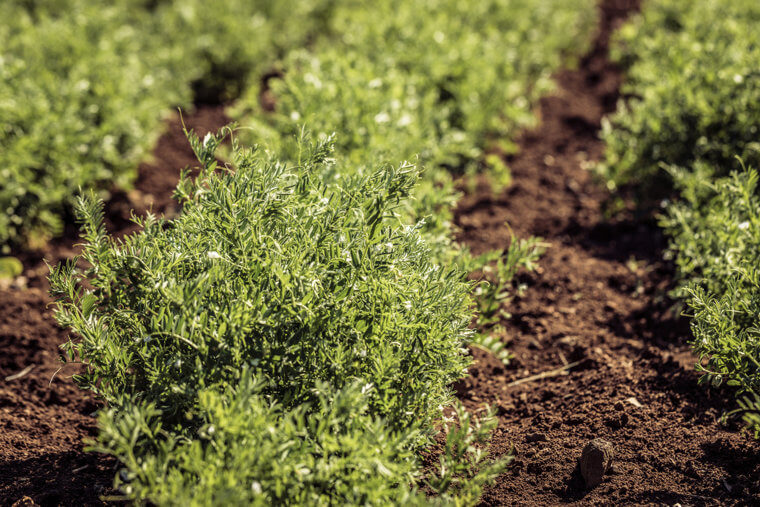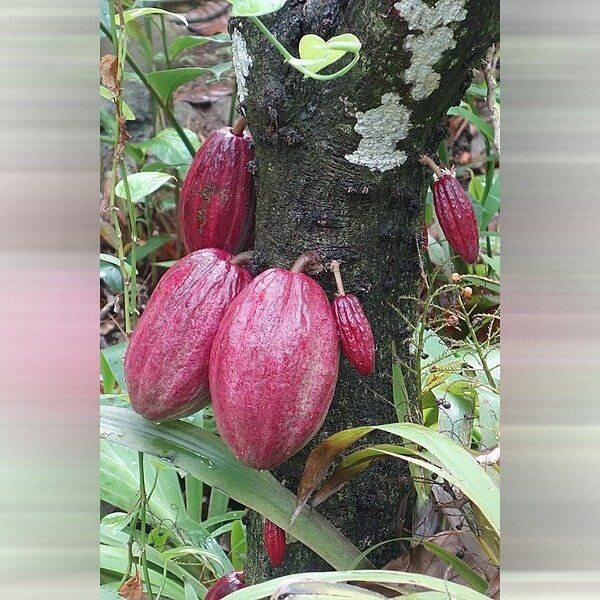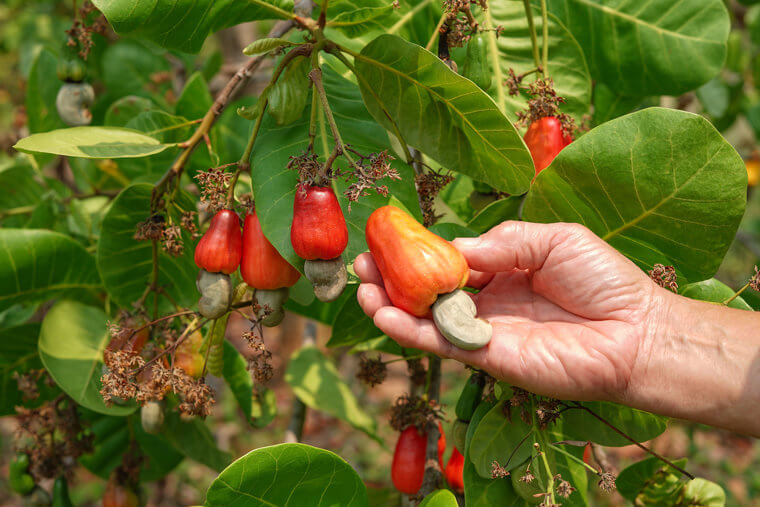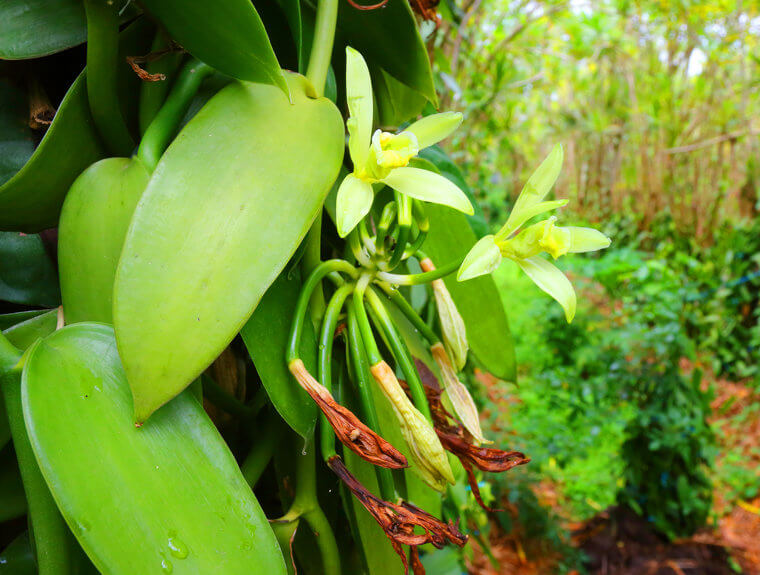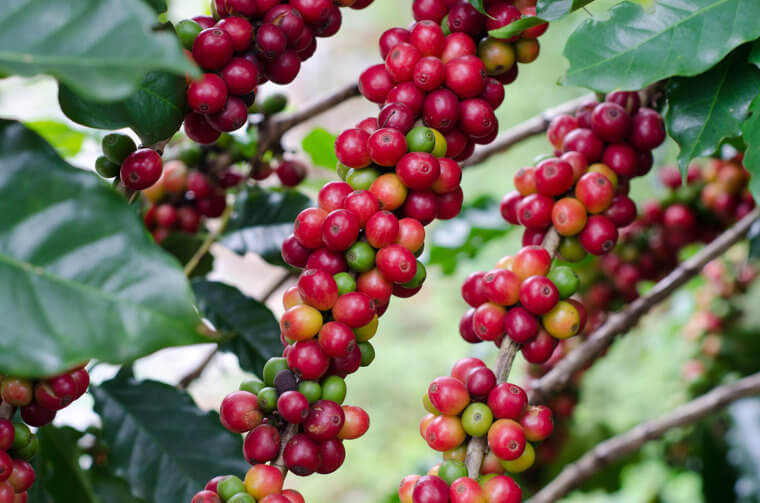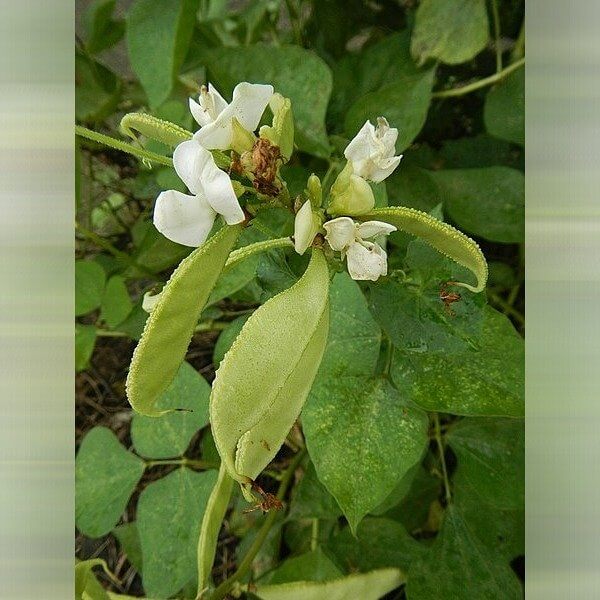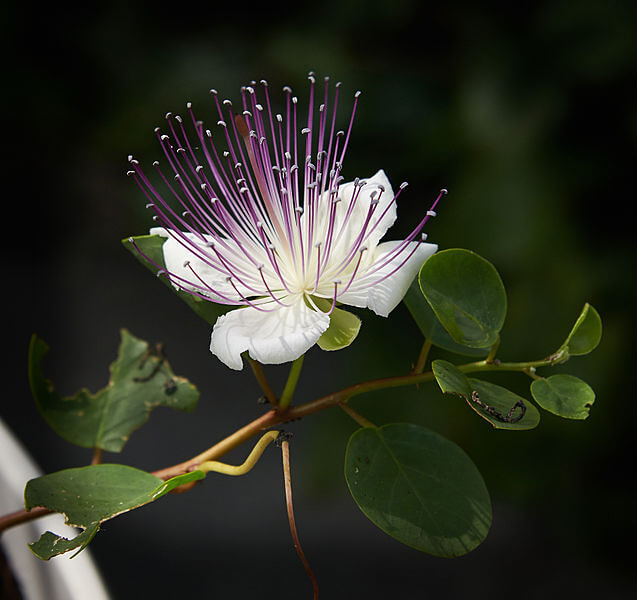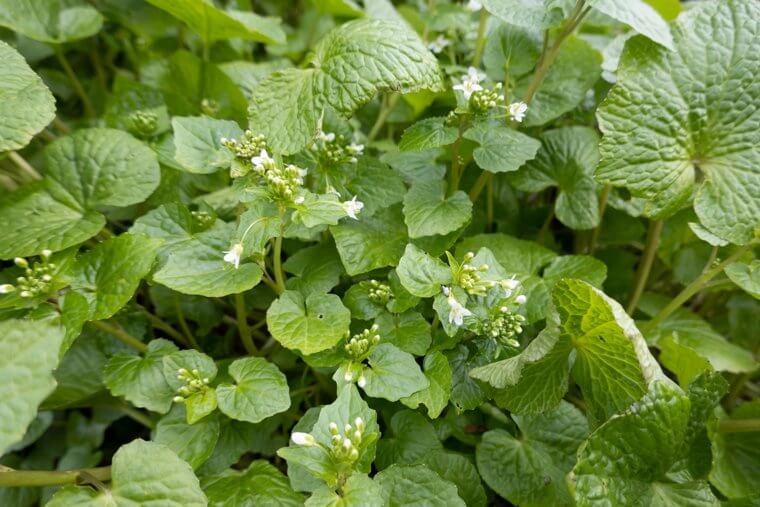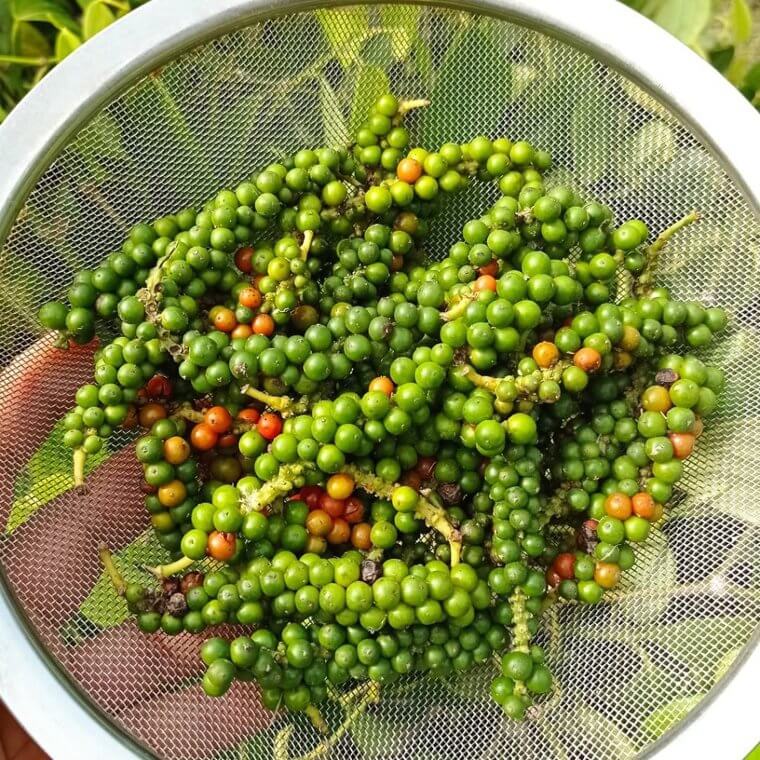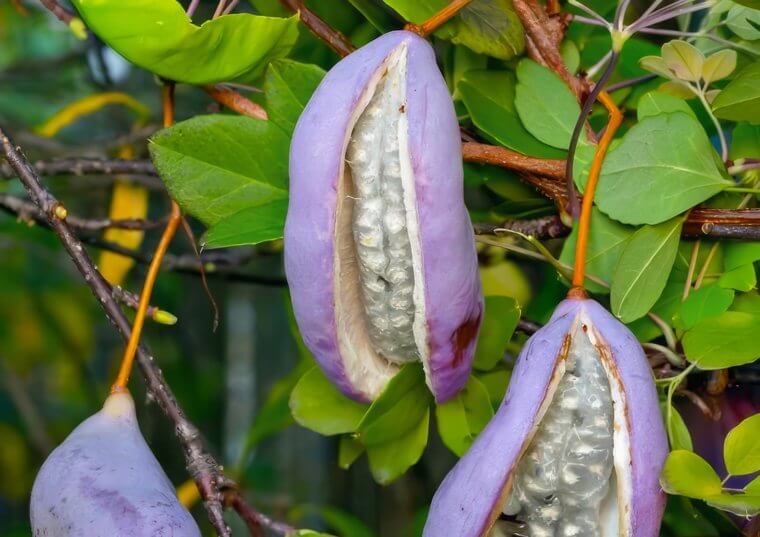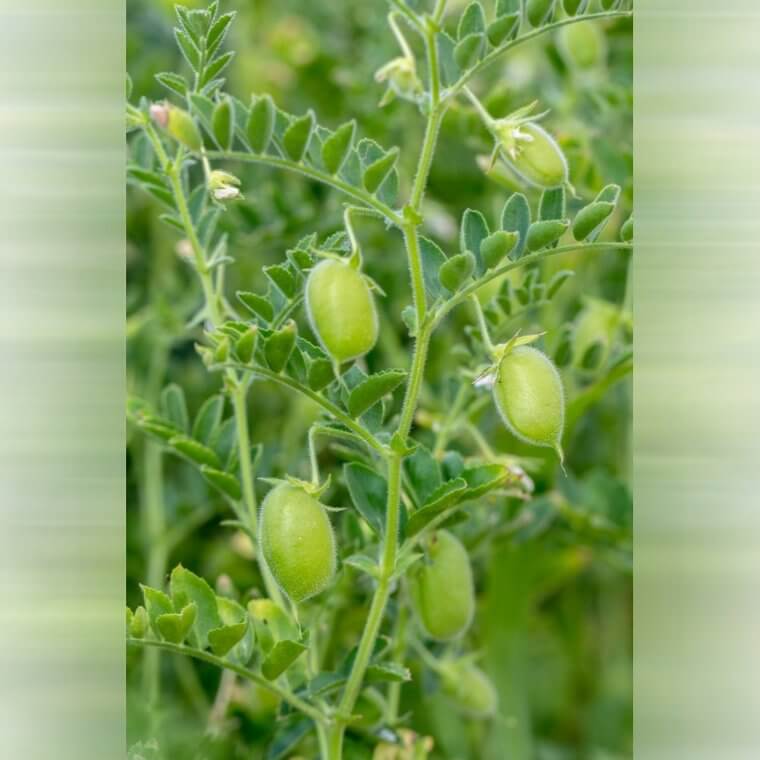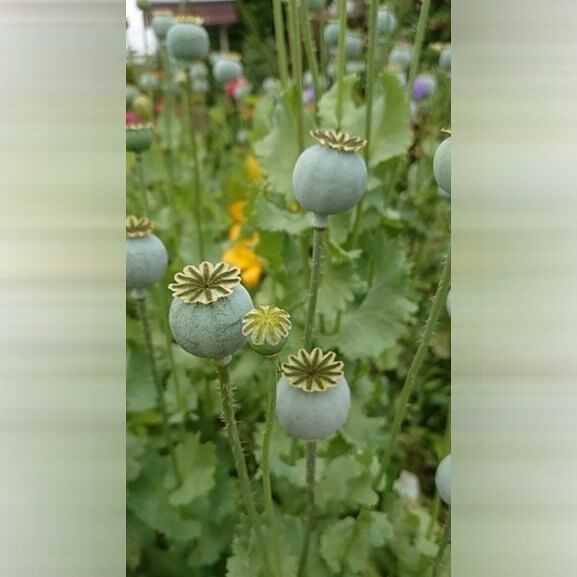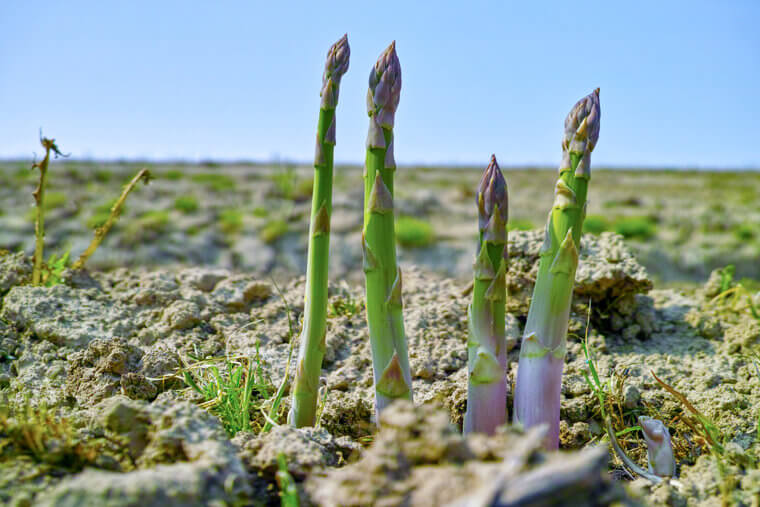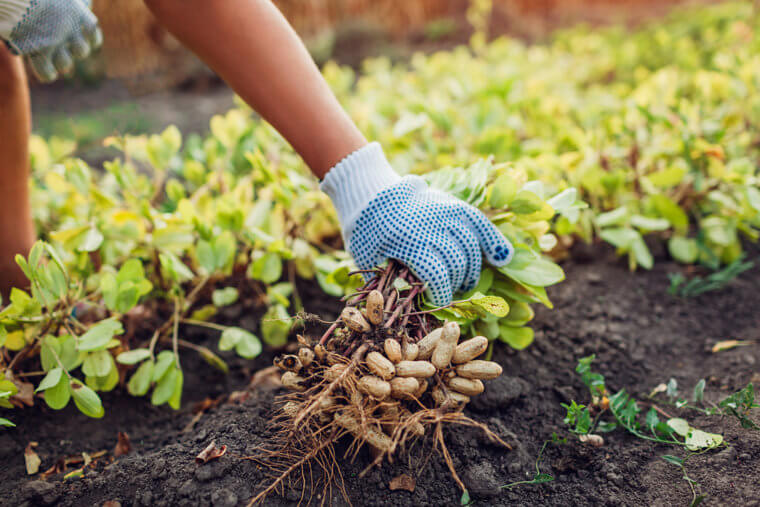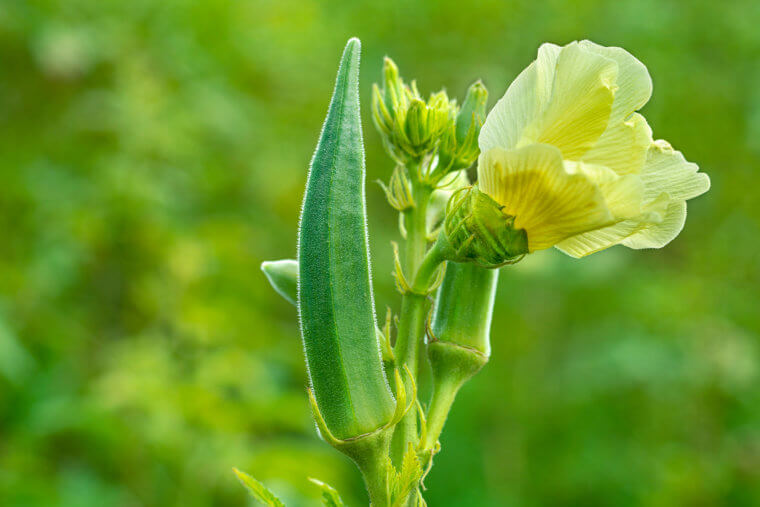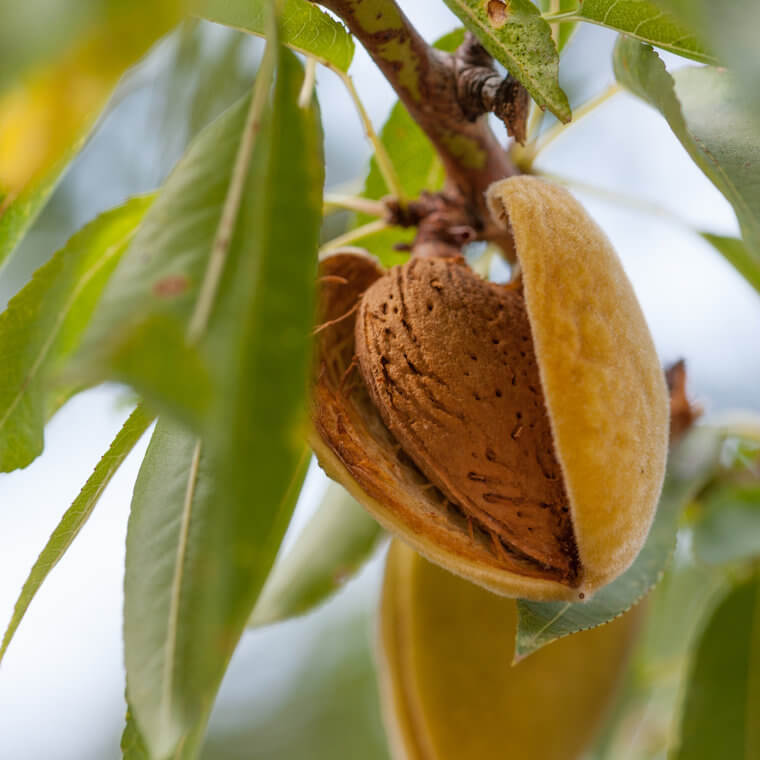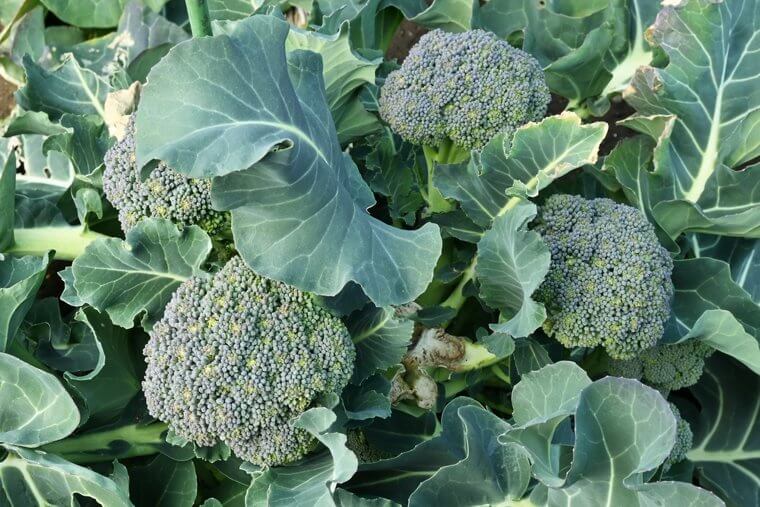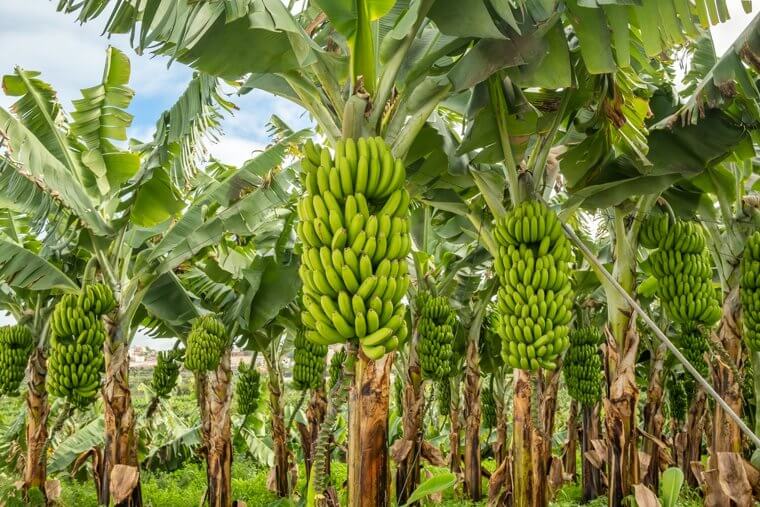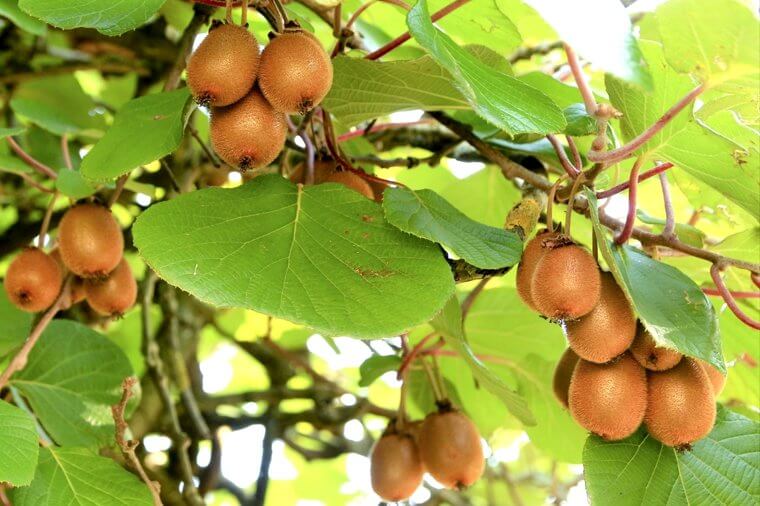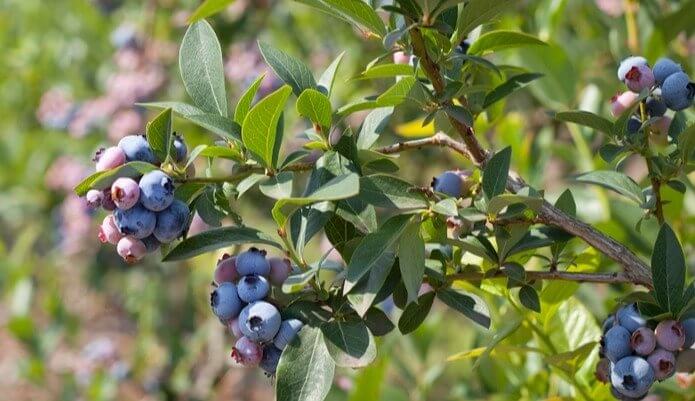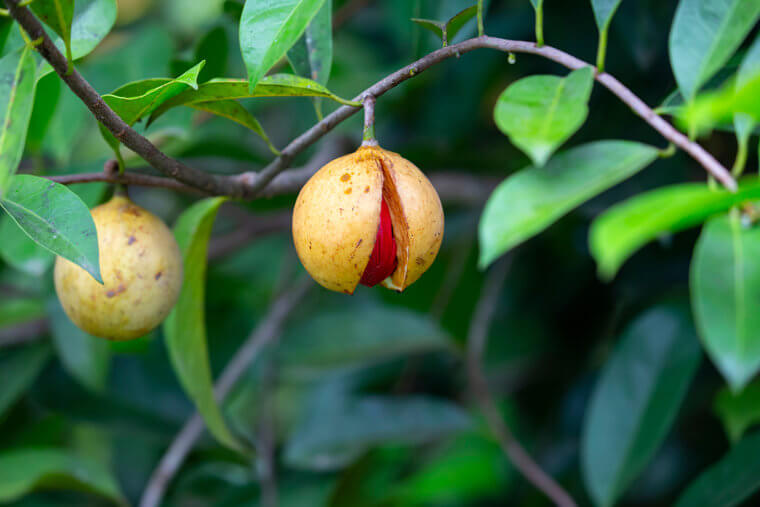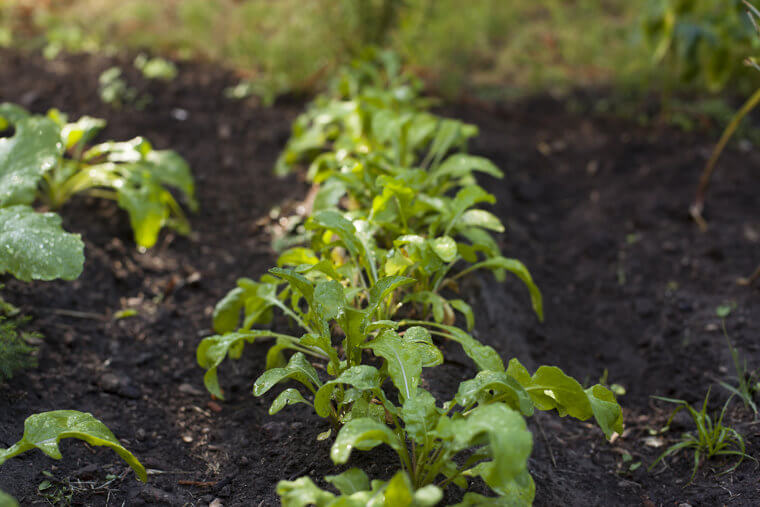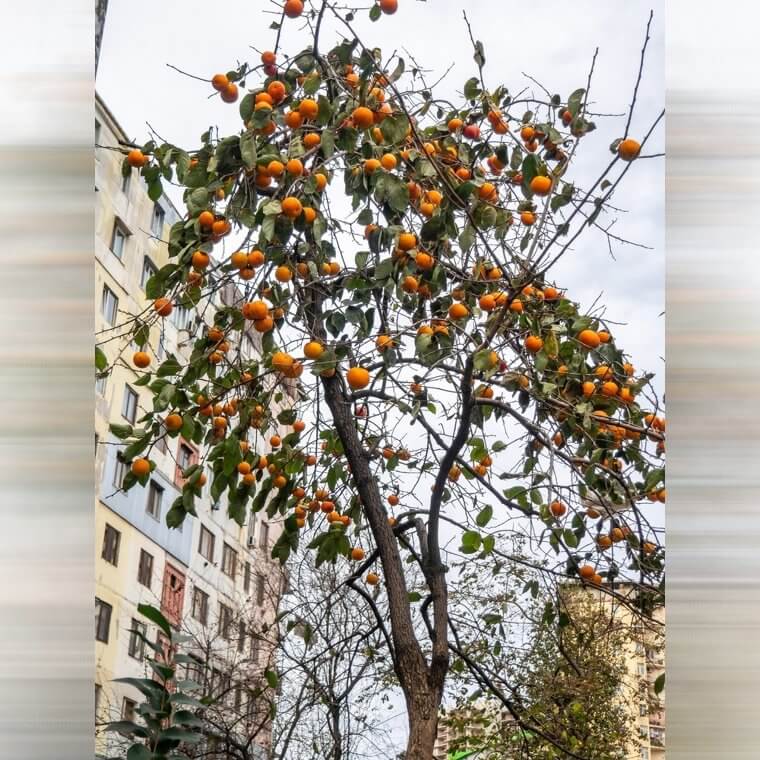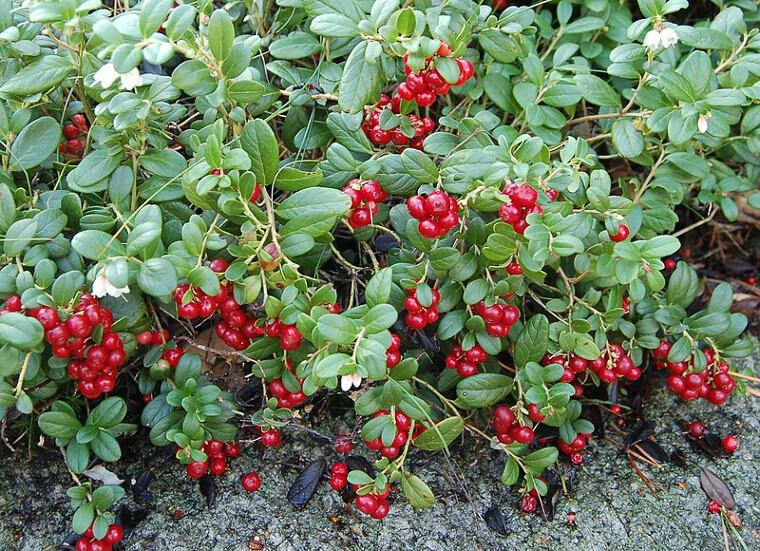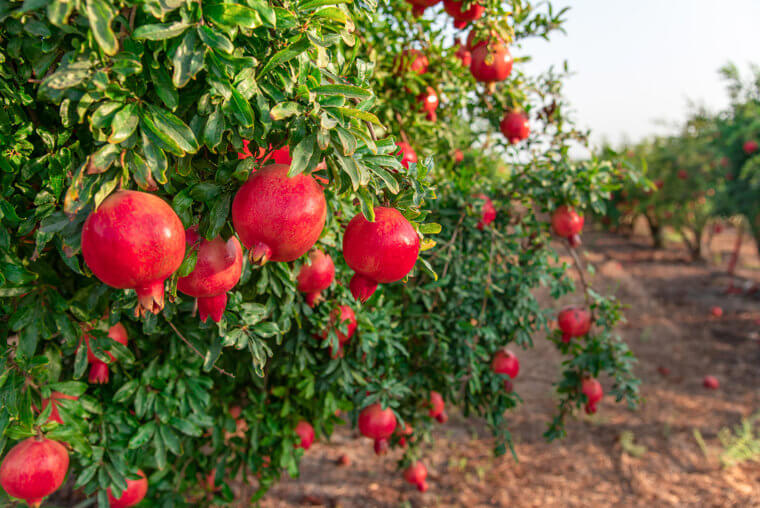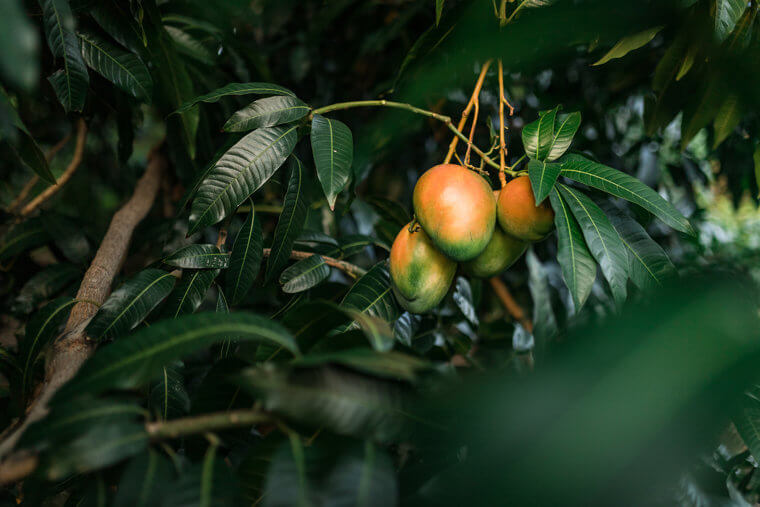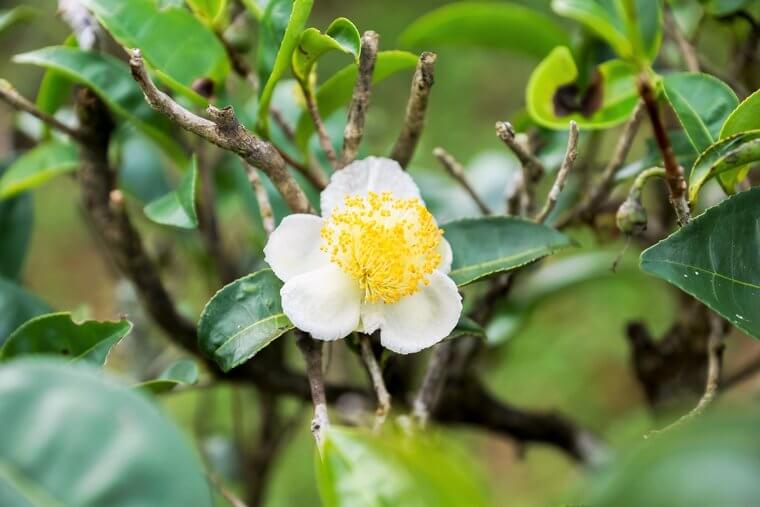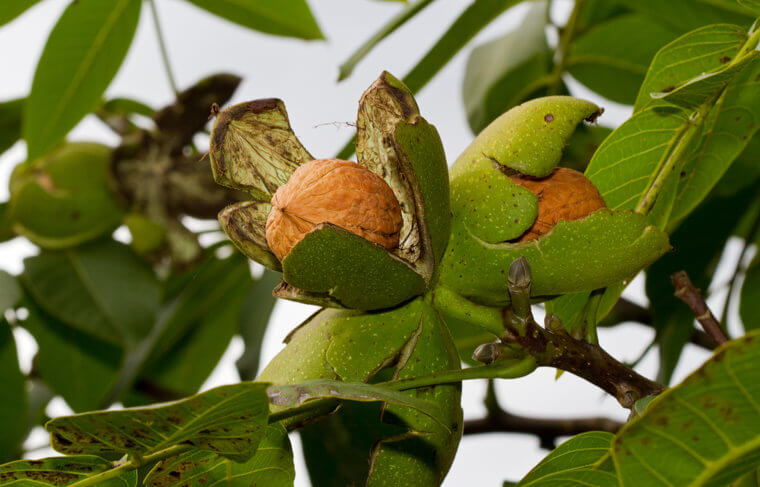Dragon Fruit
Another plant that might have you wondering whether you are still on Earth is a colorful dragon fruit. Since these plants are part of the cacti family, they have recognizable cacti stems and thorns. However, they stand out when it comes to the fruits that are found on the plant. Deep red or purple ovals hang from the stalks. These fruits have a unique appearance because they appear to have small spikes on them, but the peel is very soft. When the peel is removed, the fruit can either be dark purple or white. Both varieties have many tiny seeds.
Dragon fruit is very popular in Asia because of its high fiber count, fresh taste, and impressive shelf life. It grows out of a very strange-looking flower that blooms for only one night.
Cinnamon
We can't imagine our lives without cinnamon. The wonderful spice is used in so many dishes and drinks. Banana bread and eggnog wouldn't be the same without cinnamon! While we might all have this spice in our pantries, we might fail if we had to spot it in the wild. This is because this spice isn't what we think it is. Cinnamon comes from the bark of the tree. Thick bark cuts are removed from the tree before the transformation begins.
Cinnamon is another superfood packed with health benefits, including blood sugar regulation, heart health, and digestive improvement. Add it to your morning oats, smoothies, or cookies for a delectable treat.
Artichokes
You may have walked past an artichoke on a farm and didn't even realize it. That is because the vegetable is covered by a unique purple flower that forms a natural hat for the vegetable below. Interestingly, the bright purple artichoke flower can also be enjoyed, and people often use it as edible decorations for dishes. These plants are sturdy and require a lot of space. Due to their love of humid and hot weather, these plants do best when they are planted in regions close to the equator.
Artichokes are incredibly healthy and praised for their cholesterol-lowering and blood-pressure-regulation abilities.
Pistachios
If you enjoy these delicious tiny delights, you might be surprised to hear that most people classify these treats incorrectly. Contrary to popular belief, pistachios are fruit, not nuts. This is because pistachios grow within the fruit. The fruit isn't used, but we keep the fabulous pistachio seed! Have you ever considered that peaches and cherries might be related to these fabulous mini-snacks? Well, they are all from the same family known as the drupe species. The fruit of the pistachio plant is brightly colored, making the tree look very festive.
If the photo has inspired you to grow your pistachios, you must be very patient—up to 20 years. Pistachios are known for their slow growth, hence their high price.
Quinoa
People who take their health seriously are usually very familiar with this whole grain because it offers an impressive list of health benefits. While the tiny seeds are easy enough to pick from a shelf, finding them in the wild might be a different story. These seeds grow on strange bushes, and they cover the stems of the bush in heavy clusters of quinoa. The bush looks like a bizarrely shaped flower, but, in fact, there isn't a single flower on the bush.
When the time has come to harvest, farmers need to give the bush a good shake, and the seeds will fall from the tree. The seeds are then rinsed so that they taste fresh.
Dates
Coconuts are not the only amazing fruit that grows on a palm tree. You can also find large clusters of dates growing on these massive trees. Dates are hard to spot while they are growing because they grow very high up in the tree. These trees can grow to be more than 70 feet high, so spotting fruit that high is already challenging. Another factor is the color of the young date. They are bright green, making them look more like grapes than dates.
Dates have become very popular because of their natural sweetness. They can be used to sweeten desserts while still offering outstanding health benefits.
Saffron
Known as the world's most expensive spice, saffron is not only packed with pleasant flavors and aromas but also offers countless health benefits. Saffron helps with depression and has been linked to anticancer studies. Why is the price of saffron so high, though? That is because the spice comes from a beautiful purple flower, but only the stigma of this tiny flower contains the spice. Every flower usually carries only three stigmas, so the spice is quite rare.
Even though the growing time of saffron can be as short as ten weeks, the fact that every flower gives so little of the spice makes it a valuable and pricy spice.
Starfruit
This fabulous fruit has greatly increased in popularity in recent years, and it can now be found in supermarkets worldwide. One of the reasons why it has become so popular is its unique shape. When the fruit is cut, it resembles a star, hence the name. These fruits grow on massive trees, and most people love that they are low-maintenance plants. When starfruit are still on trees, they look more like giant seed pods or weird flowers than fruit.
While these fruits are delicious, sweet, and juicy, health practitioners warn that they should be enjoyed in moderation. Overindulgence can be rough on the kidneys.
Leeks
While many people dislike the taste and texture of leeks, they are a staple vegetable in Ireland and many Asian countries. They can often be found in dumplings, soups, and stews. These stalky vegetables are easy to identify in your local supermarket, but outside, they look like something out of a fantasy movie. That is because of their colorful clusters of tiny flowers. These interesting vegetables need at least 170 days to grow.
When leeks are planted in areas with mild weather, they will grow year-round. That is excellent news if you are a fan of the humble leek. Plus, they're high in fiber, so load up!
Zucchinis
Zucchinis have become very popular recently because of their flexibility and light flavor. They can be used in stir-fries, spaghetti replacements, or even baking! While no one can deny that they are a valuable resource for our kitchens, they might fool us when they are still attached to the plant. This is because zucchini plants grow low to the ground, and their shape makes them look more like cucumbers than zucchini. Attached to one end is a lovely bright yellow flower.
Many people don't realize that we can actually eat the flower, too. Because of its fresh flavor and beautiful appearance, it is a popular addition to soups in Asia.
Lentils
These excellent legumes are very popular amongst vegetarians, vegans, and bodybuilders because they are high in protein and fiber. When they have been dried, they can last for years, making them ideal to keep in the pantry for rainy days. Like chickpeas and asparagus, they can be canned. It is simple enough to spot lentils in the store, but outside, it is a different story. That is because lentils look more like mossy grass than legumes when growing.
Lentil plants grow very low to the ground and can reach up to 50 cm in height. They can also feel quite hairy. They enjoy a lot of space, so it is recommended to plant them far apart.
Cacao
Chocolate is one of the world's most enjoyed treats because it is delicious and versatile, and some types of chocolate carry significant health benefits. We have no problem locating the chocolate aisle in our favorite supermarket, but we might be scratching our heads when it comes to finding the cacao seed on a tree. This is because cacao requires a lot of work before becoming the mouth-watering treat we know. Before that, the seeds look quite bizarre and distasteful.
Massive cacao seeds grow on very tall trees in humid and hot areas. They are covered by a hard shell that keeps them safe. When they fall to the ground, the seeds can be removed and transformed into our favorite chocolates.
Cashews
Cashews are one of the world's most popular nuts because they are crunchy, great-tasting, and versatile. People use them in desserts, curries, salads, and soup. While their shape makes them easy to identify, they are not as straightforward to find in the wild. That is because they grow on an unusual tree and have a bizarre partnership with a cashew apple. While the cashew is young, it rests below the bright yellow cashew apple. When the apple is ripe, it'll fall to the ground.
After the apple has been removed, the cashew will be ready. Cashew apples can also be eaten but aren't a popular fruit choice.
Vanilla Bean
Most people immediately think of vanilla when asked what their favorite scent is. Vanilla beans are a popular ingredient in baking and drink preparation. People are even enjoying it as a flavoring for their tea or coffee. While we can identify the scent easily, finding vanilla beans in the wild is more complex. The vanilla bean pods grow as stems of lovely, white vanilla flowers. When they fall off, it is easier to see the vanilla bean pod.
When vanilla is ready to be harvested, the pods are opened. Each pod contains thousands of minuscule vanilla beans that can be scraped out with a knife.
Coffee Beans
Coffee beans might look like something out of a Roald Dahl book because they grow in large, colorful clusters. In fact, while they are growing, they don't look like the coffee beans we love so much at all. Rather, they look like cherries shaded in yellow, pink, or red. While they are growing, they are very unpleasant in taste. They are already packed with caffeine, but they need to mature to become enjoyable.
After they have been harvested, they are roasted. Only after the roasting process has been completed does the coffee bean have that pleasant taste and excellent aroma that we love.
Kidney Beans
These beans are considered superfoods because they are packed with fiber, protein, minerals, and vitamins. They are versatile, and they can be canned. Most people can spot a kidney bean instantly. However, while they are growing, it is a different story. These beans are covered by a pod that looks more like a pea pod than a pod for kidney beans. Once the pod has matured, it splits open, showcasing the red kidney beans we know so well.
It takes kidney beans between 100 and 140 days to mature enough to be harvested. Before the pod opens, it is best to leave them be because they won't be ripe yet.
Capers
Capers are one of those foods that you either love or hate because they pack a punch in flavor. At least with these mini flavorings, a little goes a long way. Many caper fans might find it challenging to spot them while growing because they look like they are simply a part of the caper flower. Instead, each flower is home to many capers that can be picked and then pickled. The flowers are quite pretty and house the capers on the ends of lilac stalks.
Capers need to be treated before they can be enjoyed. Vinegar and salt are used to pickle them. If they are consumed before they have been treated, they are pretty unpleasant.
Wasabi
Anyone who has eaten wasabi without realizing what it was knows that the paste packs a punch that can be unbelievably potent. Anyone who enjoys wasabi with their sushi can spot it at their favorite sushi restaurant, but finding it in a garden will be more challenging. That is because wasabi grows as tiny leaves that are later turned into a paste. Surprisingly, wasabi is very challenging to grow, so many varieties of wasabi that we find in the shops might be artificial.
Wasabi offers many health benefits, including gut and heart health, antibacterial and anti-inflammatory properties, and treating allergies.
Black Pepper
Is that a new kind of caterpillar that we see? Nope, it's a string of pepper kernels. This plant is fascinating because it isn't a spice, contrary to what most people believe. Instead, it is a fruit. It can be challenging to spot because it grows on short stems covered with clusters of green kernels that will later change color when they are dried. When black pepper is young, it looks more like miniature grapes than black pepper.
After the stems covered with pepper kernels have been removed, they will be separated and then dried. They shrivel up slightly as they darken in color and harden.
Akebia Quinata
This isn't a widespread fruit, and many people in the West might have yet to see this exciting fruit. However, it shouldn't be missed. Grown in Japan, the fruit got its name because it has a pleasant chocolatey fragrance. The fruit is sweet and soft, making it very enjoyable. The fruit is hard to spot if you don't know what you are looking for because they grow inside purple pods that keep them safe. Only when the fruit is ready does the purple pod split open.
This fascinating fruit has become very popular in Asia because of its anti-inflammatory properties. It is also a very effective treatment for arthritis.
Chickpeas
Vegetarians and vegans can't get enough of chickpeas because they are packed with protein, minerals, and vitamins. They are also popular because of their use in dips and hummus. In addition, they can be roasted to make a crunchy, healthy snack. People enjoy the fact that they can last for years when they have dried. But what do they look like before they are eaten? They hide inside a little pod, making them hard to spot.
When ready for harvest, the pod begins to open, releasing a small, light-green chickpea. The chickpea's color changes as it matures into the light brown we recognize.
Cloves
People who enjoy making stews and soups are familiar with this spice. Cloves are an excellent example of dynamite coming in small packages because while they are small, they have a robust flavor. While cloves are growing, they are very pretty in appearance. That is because they make up the buds of bright red flowers. After these flowers dry up and fall down, cloves can be harvested and used for all sorts of things.
The flowers can also be used. They have a much lighter flavor than cloves. It is important to wait until they have turned into a red color before consuming the flower, though.
Poppy
If you've ever ventured into a poppy field, you might think you've arrived in an alien wonderland. Before poppy seeds are harvested, the plant looks very bizarre. The seeds grow on thin stems with tiny thorns. On top of the seed rests a strange little flower that completes the interesting look of the poppy seed. The seeds grow well, and if you take care of your poppy plants, you can enjoy fresh seeds every eight to ten weeks.
Most people might think that poppy seeds are best used in bagels, but they have significant medical benefits. Poppy seeds are used to produce many powerful pain relievers.
Asparagus
If you enjoy these green stands of crunchy goodness as much as we do, you probably wondered what they look like while growing more than once. Interestingly, asparagus grows in single stalks that stick out of the ground like massive pieces of grass. These large stalks are cut down at the soil level when it is time to harvest. Asparagus enthusiasts might be tempted to plant this fantastic vegetable. While it grows well, it is a slow process that requires up to three years.
Asparagus is an excellent source of vitamins and fiber. Its ability to be stored in cans for years adds to its appeal.
Peanuts
Contrary to popular belief, peanuts are not nuts. Instead, they are legumes, which can make it challenging to find them while they are growing. Interestingly, these legumes grow a lot, like yams and potatoes. They grow under the ground, and when they are removed, they can be found at the bottom of the plant's stem above the roots. Most peanuts take 120 days to grow, and harvesters will know the time has come when they see pretty, little yellow flowers sticking out from the ground.
The leaves that grow above the peanut are not edible but are used in Asia to treat wounds because of their antibacterial and anti-inflammatory properties.
Okra
People who enjoy elevating their stews, casseroles, and pies to exotic levels love the interesting element that okra adds to their meals. These green vegetables are not everyone's cup of tea, but people who love them love them immensely. Okra grows on a small tree and is hard to find because it is actually the stem of the okra flower. After the flower dries up and falls off, it is easier to see the ripe okra that is ready for harvesting.
The beautiful flower can also be eaten; many enjoy its fresh, light flavor. It is often found in soups and in many African, Jamaican, and other Caribbean dishes.
Almonds
These days, coffee shops offer customers a variety of kinds of milk. One popular kind is almond milk. Almonds are lovely snacks because they are delicious and packed with nutrients. Contrary to popular belief, an almond is not a nut. Instead, it is a drupe plant. Interestingly, almonds are closely related to roses, which may explain their light, floral taste. These drupes are hard to spot because they are hidden.
A beautiful white flower grows above the pod that contains the almond. When the almond is ripe, the flower dries and falls off. Then, the pod opens up, exposing the almond.
Broccoli
A fascinating feature of this bulbed plant is that it can only be handpicked. This is because of the thick stem of the broccoli. There isn't a machine that can successfully pick these plants without damaging them, so know that when you buy broccoli, someone has carefully hand-picked it. These vegetables got their name from the Italian name broccolo, which roughly translates to the flowery head of cabbage. This is quite an accurate name!
Broccoli can be challenging to identify while it is still growing because the bulb gets covered by giant leaves that keep it safe. These leaves can also be eaten, but they can be pretty tough.
Bananas
Their appearance might not be the only surprising thing. Many people don't realize that bananas are not even considered fruit. Instead, they are herbs because of the way they grow. In fact, bananas are related to the ginger family! If you've ever found a banana bush in the wild, you were probably amazed by the amount of bananas that can be found. These delicious treats grow large bundles that can hold up to a hundred bananas!
Another feature of bananas that might confuse you is the color. Interestingly, bananas are not always green or yellow. Some types of bananas are blue!
Kiwis
If you enjoy the slightly tangy and sweet flesh of a kiwi, you might be surprised to hear that this delightful treat isn't a fruit. Instead, it is technically a berry. Regardless, these tasty berries are tiny oval-shaped powerhouses that improve gut and heart health. Kiwis can be challenging to spot while they are still growing because they form within a flower. A kiwi tree becomes covered in pretty white flowers that later showcase the beginning of mouth-watering kiwis.
Kiwi trees are known for being relatively easy to take care of as long as they aren't planted in places with freezing weather. They take up to 5 years to produce their first kiwis.
Blueberries
These berries might make you think more of clusters of small cotton wool balls than blueberries because they get their iconic color long after they have begun growing. In fact, they change into their dark blue or deep purple shade in a relatively short period before harvesting must happen. Due to their short shelf-life, farmers need to observe them closely because their harvesting period is short. This is what we call blueberry beauty!
While blueberry trees grow quickly enough, farmers claim that a new tree's first three harvests aren't plentiful. Therefore, successful harvesting begins after the tree's sixth year.
Nutmeg
Nutmeg is another spice that we associate with the holidays. The fantastic flavor of this versatile spice makes our drinks, desserts, and meals more tasty and flavorful. When nutmeg is dried and turned into a powder, the spice can last for years. It is easy for you to spot nutmeg at your favorite coffee shop, but finding it on a plantation requires some detective work. The spice grows inside a small fruit that splits open when it is ready to be harvested.
The fruit isn't used, but the seeds are collected and then turned into the spice that we know and love so much.
Pineapples
Many people believe that pineapples are vegetables, but that is not accurate. Instead, pineapples are fruit. They grow on large, spiky bushes that lie close to the ground. Pineapples can be tricky to spot when they are young because they are dark green and small. As time passes, they grow into their usual shape and lighten in color. Interestingly, the spikes of the pineapple bush are also edible, but they aren't as refreshing and sweet as the fruit.
Pineapples are magical fruits because they are great for our immune system and help reduce inflammation. That is why people who are recovering from surgery are often advised to indulge in pineapple.
Arugula
People have become much more health-conscious these days and care more about what goes into their bodies than ever before. Salads are ordered more frequently than ever before. Most restaurants include this wonderful leafy vegetable in their salads because it is rich in vitamins and minerals. In a salad, you can pick out arugula from the other leafy plants easily. However, outside, you might walk right past it because of how unremarkable it looks.
Arugula doesn't look like much while it is growing. In fact, it looks more like a weed than a valuable plant. It grows close to the ground as a shrub.
Persimmon
These orange fruits are very popular in Asia because they can be dried and kept for years. They are often used to make syrups and jams, and they can be found in teas. While the fruits are unique in taste, the way they look on the tree is even more fascinating. In fact, a persimmon tree is quite unappealing because it appears to be spikey since it doesn't have many leaves. Fortunately, what the tree lacks in appeal, it makes up for in the number of persimmons it can offer.
As they grow, these classic fruits change quite a bit in size and shape. When young, they might look more like mini oranges than persimmons.
Cranberries
If you enjoy cranberries, you might be surprised by the process involved with growing these wonderful little berries. Similar to rice, a cranberry plantation needs to be flooded before it will begin growing. These bushes need to soak for a while before forming the mini berries we love. When they begin forming, they are tiny, colorless balls that grow in clusters around the branches. As time passes, they begin to change color and grow in size.
Unfortunately, a large percentage of cranberries are too sour to be enjoyed. In fact, we can only consume 5% of the world's cranberries. The rest are used in juice, jams, or syrups.
Pomegranate
Earlier, these interesting fruits were associated with royalty, and today, pomegranates still possess a certain allure that can't be ignored. These bright red fruits are filled with sweet and juicy seeds that can be eaten as they are or added to desserts, salads, or even soups. When they are young, they don't have their bright red color yet, making them appear more like an oddly shaped apple than a pomegranate.
As time passes, the fruit begins to change color, and by the time they are ripe, they look like mini lanterns hanging in a tree.
Mango
Mangoes are one of the world's most loved fruits because they are sweet, juicy, and delicious. While their color and distinctive shape make them easy to identify in a store, they are not as easy to find in the wild. That is because they only get their iconic color and shape when they are nearly ready to pick. While they are young, mangoes are rounder and dark green or purple in color. They are also rock solid.
Some mango varieties grow to be very small, green, and hard even when they are ready to be harvested. These are better served in thin slices in salads or pickled.
Camellia
Tea drinkers will be familiar with the delicious floral taste of camellia tea. The flower has become very popular thanks to its health benefits and calming effects. While many people confuse it with hibiscus, which is also used to make tea, camellia flowers are lighter in color, and the tea that is made from them is quite a bit stronger in flavor. The camellia plant is relatively low maintenance, and it grows very quickly.
Camellias might be tricky to find in the wild because they are made from a small white flower with many yellow stigmas. If you don't know what to look for, you might think they're just another pretty flower.
Walnut
Considered by many to be the king of the nuts, walnuts are unbelievably flavorful and versatile. They can be enjoyed as they are or used in cakes, salads, or curries. Walnuts are rich in antioxidants and Omega 3s, making them a great choice for a snack on the go. Nut enthusiasts can easily spot this nut in the nut aisle, but they might need clarification when they need to find the nut in a plantation. This is because a walnut grows within a unique hard shell that keeps it safe. Because it has a rigid casing already, it is safe to say that the nut grows inside two hard shells.
When the nut has matured, the outer green casting will split open, exposing the walnut inside its shell. The nut can now be removed and enjoyed.
